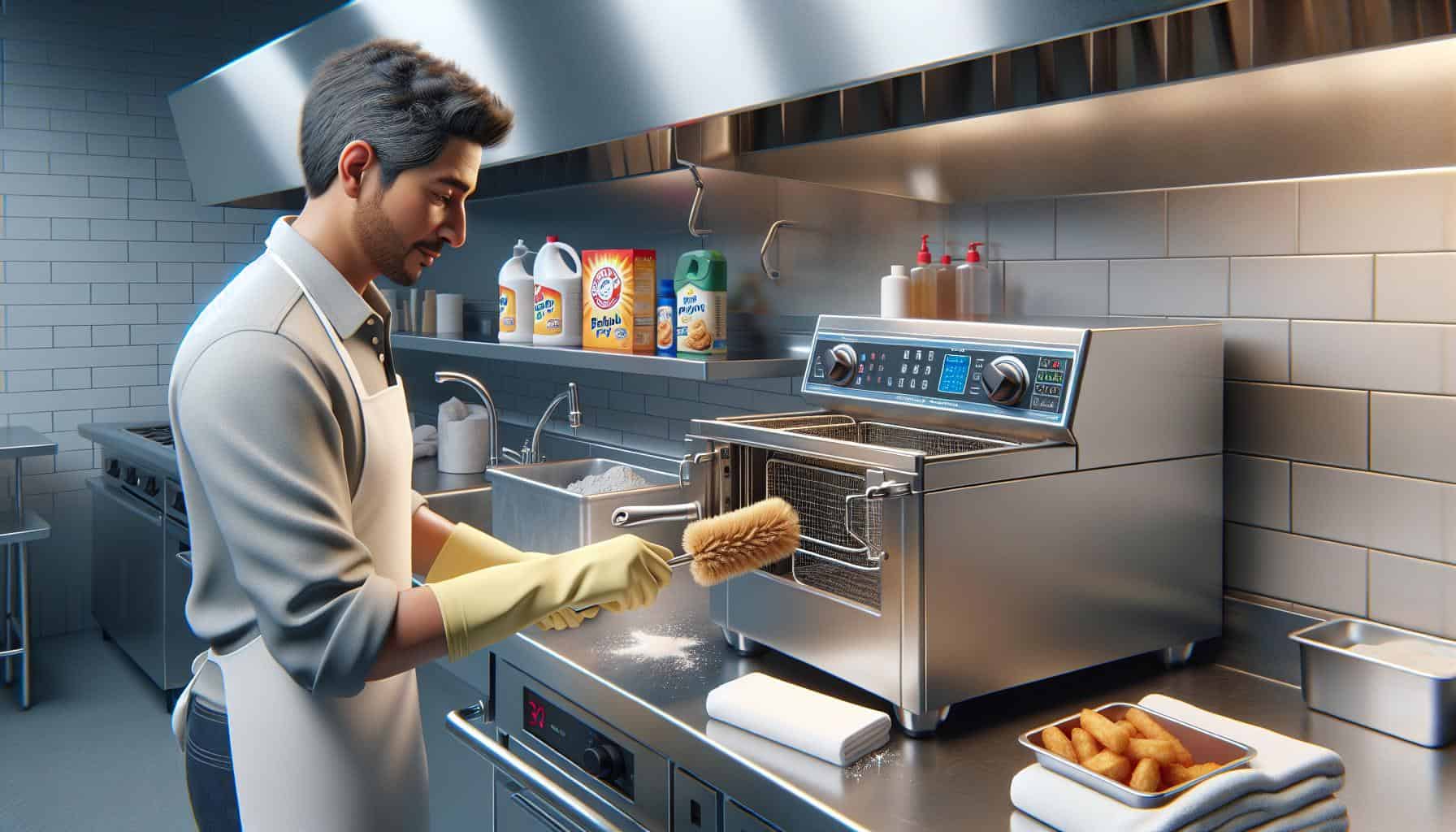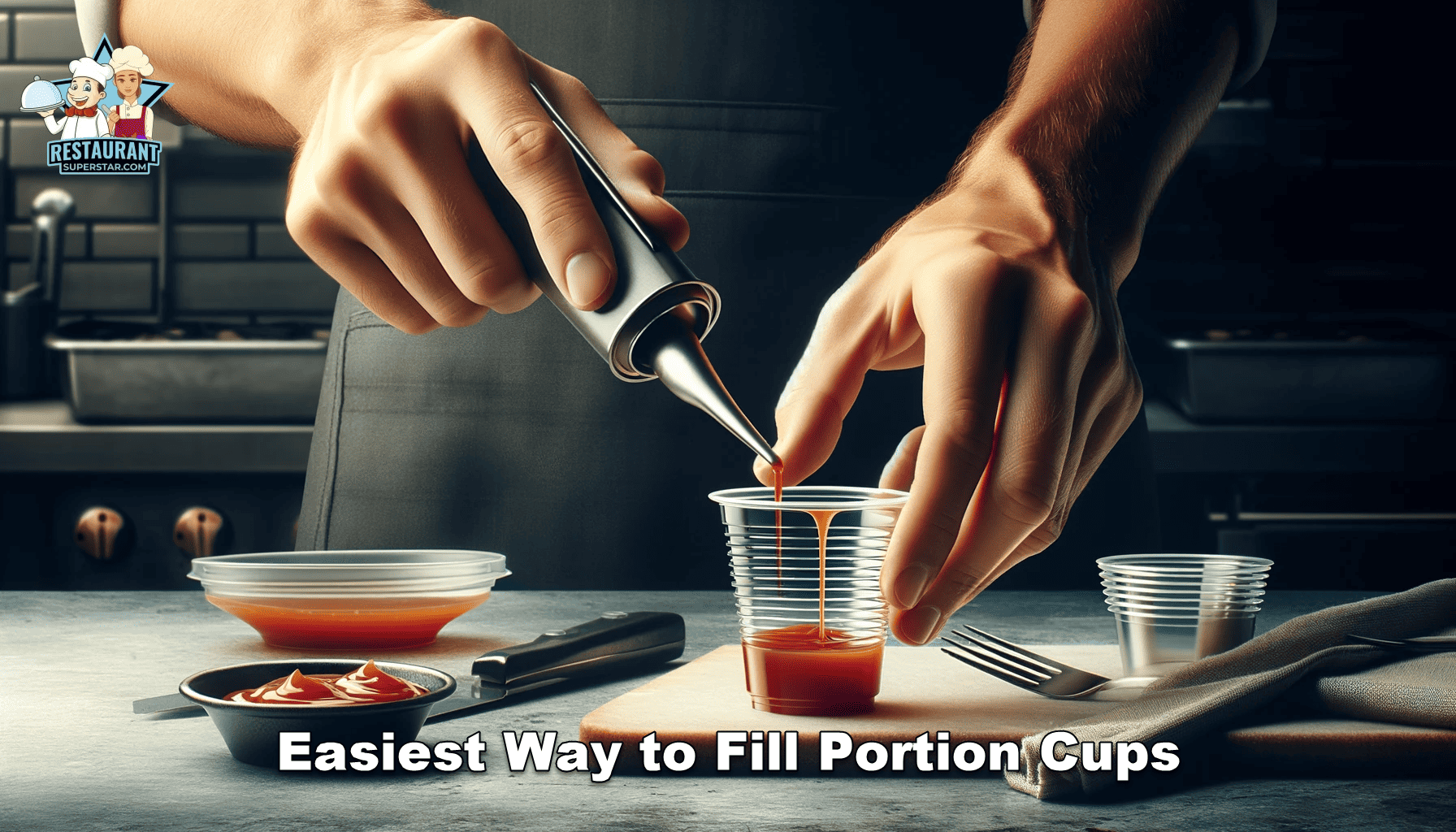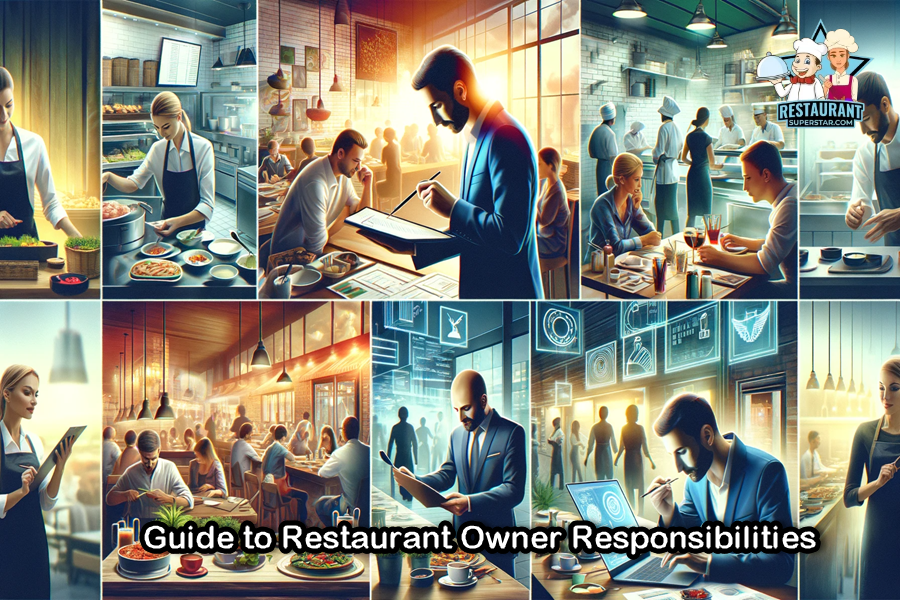How Do Restaurants Reheat Baked Potatoes?

If you’ve ever pondered, “How do restaurants reheat baked potatoes?” you’re in the right place.
Not only will this article answer that burning question, but we’ll delve into the intricacies that make restaurant potatoes so divine.
Every detail matters in the culinary world, and when it comes to baked potatoes, restaurants have their secrets perfected to an art.
How do restaurants reheat baked potatoes?
How do restaurants reheat baked potatoes? Restaurants employ various methods based on their equipment and preferences to heat food. The primary techniques include microwaving, oven reheating, air frying, grilling, and stovetop cooking.
But while the quick answer may quench your curiosity, the magic lies in the details.
How does each method influence the potato’s texture? Why might one technique be preferred over another?
In this article, we will unravel these mysteries and more.
Now that you’ve got a taste of the answer, it’s time to delve deeper. In this article, we’ll cover everything from the science behind each reheating method to the art of keeping these beloved spuds warm and ready for service.
But it doesn’t stop there. Have you ever wondered why some restaurants serve potatoes wrapped in shiny aluminum foil or generously sprinkle salt on the skin? You’re about to find out.
Buckle up if you’re a budding restaurant owner looking to up your potato game or a curious mind hungry for knowledge.
This journey into the heart of the baked potato universe promises to be enlightening.
Hey there,
Jeff here, your go-to restaurant consultant from sunny Florida. Now, if there’s one thing I’ve learned from my years in the industry, it’s that details matter.
Big time. And be honest—baked potatoes might seem like a simple side dish, but they’re a staple in many restaurants.
Getting them right can make the difference between a customer returning for more or deciding to dine elsewhere next time.
When running a bustling restaurant, every single dish counts, even the humble baked potato.
Why?
Here are a few reasons:
- First Impressions Last: Believe it or not, a reheated baked potato can make or break a customer’s dining experience. It leaves a poor first impression if they get a potato that’s too dry or overly mushy.
- It’s All About Consistency: Customers return because they crave the same delightful experience. When they order a baked potato, they expect that perfect balance of crispy skin and fluffy insides—every single time.
- The Versatility of Potatoes: A well-reheated baked potato can start many dishes. Top it with some chili, cheese, or veggies, and boom, you have a showstopper on your hands!
I’ve seen it all, from restaurants that nail it every time to places that struggle with serving a mouth-watering reheated spud.
I highlight the million-dollar question: How do restaurants reheat baked potatoes?
Let’s dive deep into the world of baked potatoes and explore the tricks of the trade.
Whether you’re a seasoned restaurant owner or just starting, this knowledge can be a game-changer for your establishment.
The Art and Science of Reheating Baked Potatoes

Without a doubt, how a restaurant reheats baked potatoes speaks volumes about its commitment to excellence and meticulousness.
Now, let me spill some of my seasoned secrets. There’s a blend of art and science behind serving that impeccable reheated baked potato that patrons can’t stop raving about.
Here are some of the top reheating methods that restaurants swear by:
Conventional Oven Magic
The tried and true method. This method captures the essence of that crisp skin and velvety interior.
I’ve always enjoyed the good ol’ oven.
It retains the potato’s natural flavors and ensures a crispy finish, especially if you lightly brush it with oil.
Remember the time; you don’t want them turning into potato rocks.
Microwave Madness
It’s the fastest way to get that spud sizzling. Some restaurants use this in a pinch when time is of the essence.
Alright, I’ll be honest.
Microwaves can be a hit or miss. While they’re super quick, they can make your potatoes too soft. If you’re in a hurry, sure, but always be cautious.
Steaming Sensation
Steaming baked potatoes brings out a moist, fluffy texture without overcooking.
Steaming’s great, especially if you’ve got the right equipment.
I’ve been to some places where they nail it with steaming, especially when serving loaded potatoes. The toppings merge beautifully with the moist potato flesh.
Grill Guru
Some restaurants love that charred taste on their potatoes. Enter the grill.
There’s something about grilled baked potatoes, especially if you want a rustic vibe in your restaurant. It’s an outdoor BBQ feel on a plate.
Just remember, it’s all about managing that heat.
While each method has pros and cons, the key lies in understanding what your customers prefer and how it aligns with your restaurant’s theme.
And hey, a little experimentation never hurt anyone, right?
In the following sections, I’ll dive deeper into each method, providing the little tips and tricks to make each potato pop.
Remember, friends, reheating baked potatoes in a restaurant isn’t just about warming them up—it’s about enhancing their flavors and delivering a memorable experience.
Stay tuned, and let’s master this together.
Microwaving: A Quick Fix with Limitations
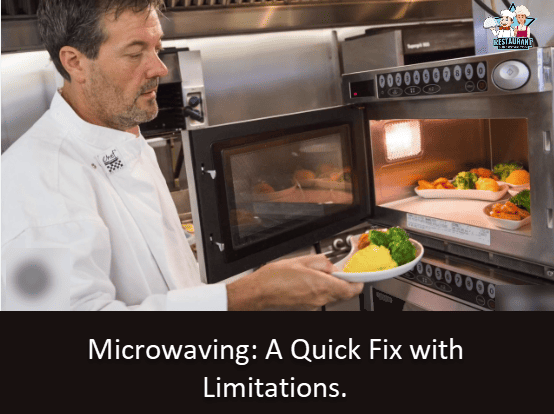
Having experience, I understand the occasional need for efficiency in the kitchen. This brings us to the microwave.
However, is this rapid solution suitable for cooking baked potatoes?
Let’s analyze the details.
Pros of Microwaving Baked Potatoes
Speedy Gonzalez
- Microwaving is undoubtedly the quickest way to get those taters reheated. Perfect for a busy Friday night when orders are pouring in faster than Florida’s summer rain.
Consistency
- With a microwave, you get to reheat the potato. Say goodbye to those cold centers.
Energy-Efficient
- Compared to firing up a conventional oven, microwaves use less energy. Not only are you speeding things up, but you’re also being kinder to Mother Earth (and perhaps your utility bill).
Cons of Microwaving Baked Potatoes
Texture Troubles
- Here’s the biggie. Microwaving can sometimes leave your potatoes with a slightly rubbery texture. It’s different from the mouthfeel you’re going for, especially if you pride yourself on top-notch sides.
Skin’s Not the Win
- Crispy skin lovers, be wary! Microwaves won’t give you that golden, crispy skin. Instead, you might find it a tad on the soft side.
Uneven Heating
- While microwaving generally heats potatoes evenly, there’s always that off chance of a hotspot. You know, that random scalding bite in an otherwise hot potato.
So, How Does Microwaving Affect the Potato’s Texture?
Let’s get a bit of science here (but not too much, promise!). Microwaves heat food by producing waves that excite water molecules.
These excited molecules generate heat, which cooks or reheats your food. Now, with baked potatoes, they’re packed with moisture.
When microwaved, the inside becomes steamy and soft. At the same time, the skin doesn’t get the crispy finish that methods like oven reheating or grilling provide.
My two cents?
Microwaving is a handy tool, especially during rush hours. But always weigh the convenience against the quality.
Consider using more traditional reheating methods if your restaurant boasts about its baked potatoes.
In this business, adaptability is vital.
Knowing when and how to use a microwave effectively can be a game-changer on those hectic nights.
Just remember: always prioritize customer experience. A few extra minutes could mean the difference between a meh potato and an “Oh my gosh, this is the best-baked potato I’ve ever had” review.
Oven Reheating: The Gold Standard for Texture and Flavor
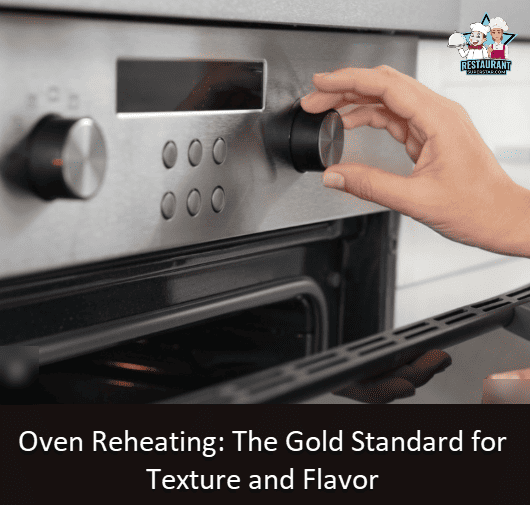
When it comes to reheating baked potatoes, the oven undeniably reigns supreme.
Allow me to explain why: the oven possesses unparalleled mastery in achieving the perfect reheating technique.
Its exceptional ability ensures the optimal outcome, elevating the taste and texture to new heights.
Do you comprehend what I’m conveying?
It’s like the perfect reheating maestro, ensuring those potatoes come out all warm and fluffy, just like you like them.
So, trust me on this one, my friends: the oven is where it’s at when you want those spuds to taste top-notch.
Why Many Restaurants Opt for Oven Reheating
Unmatched Texture
- The oven reheat ensures that your baked potato retains its crispy skin on the outside while the inside stays beautifully fluffy. Microwaving might be quick, but if you want a texture that screams “perfection,” then the oven is your go-to.
Flavor Preservation
- The race to savor the finest flavors is best won through a measured and deliberate approach. Oven reheating allows the potato to warm up evenly, preserving its rich and earthy taste. There’s no “nuked” flavor here.
Quality Assurance
- Using an oven is a consistent and reliable method. You can be confident that each potato will be reheated to the same standard of excellence, making it a favorite choice for restaurants that prioritize quality.
Tips for Achieving the Crispy Skin and Fluffy Interior
Temperature Matters
- Preheat your oven to about 350°F (175°C). This temperature ensures a gentle reheat, bringing out the potato’s best qualities without overcooking it.
Foil-Free Zone
- Avoid the temptation to envelop the potatoes in foil. The skin can breathe and attain a delightful crispness by leaving them unwrapped. Additionally, who can resist the allure of a satisfying crunch?
Turn ’em Over
- Halfway through reheating, give your potatoes a little flip. This ensures an even reheat and crispness on all sides. Trust me; it’s worth the extra step.
Don’t Rush
- Good things come to those who wait. On average, a medium-sized baked potato will take about 20 minutes to reheat in the oven. Keep an eye on them, and trust the process.
While the allure of faster methods might be tempting, remember that sometimes the traditional way is the best.
In the bustling world of restaurant ownership, where quality can set you apart from the competition, ensuring that your baked potatoes are reheated to perfection in the oven is a small but impactful detail.
Remember, the little things often make the most significant difference. And as always, here’s to serving dishes that make our customers’ taste buds dance.
Creative Reheating Methods: Air Fryers, Grills, and Stovetop Techniques
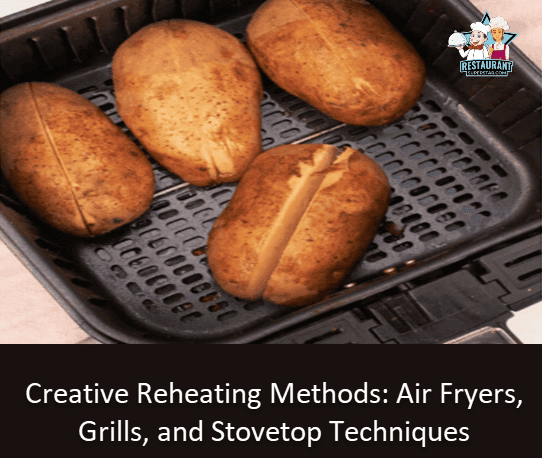
Since we have already explored the conventional methods, it is time to bring some excitement. Let’s unleash our creativity and explore new possibilities with our culinary creations.
Air Fryers
Speedy and Crispy
- Think of an air fryer as a mini turbo-charged oven. It circulates hot air around the potato, reheating it quickly while giving you that oh-so-desired crispy skin. And did I mention it’s quick? Yep, it’s quicker than the traditional oven but with some of that beautiful texture intact.
Minimal Oil, Maximum Flavor
- One of the perks of an air fryer is that you get that fried texture without immersing your food in oil. A light oil brush on your potato, and you’re golden – literally.
Grilling: For That Irresistible Smoky Edge
Smoky Goodness
- Something about the charred lines and the infusion of that smoky flavor transforms a baked potato into something magical. Grilling is an art; when done right, your potatoes will be a testament to that.
Outdoor Vibe
- Grilling transcends mere culinary technique; it embodies an immersive experience. Ideal for restaurants embracing an al fresco ambiance or summer soirées with a delightful BBQ flair. If your establishment screams “sunny vibes,” this is your go-to.
Quick Tip
- Cut your baked potatoes in half before grilling. It allows for a faster reheat and more surface area for that smoky flavor to adhere to.
Stovetop Techniques
Pan-seared Perfection
- Transform that baked potato into a delectable delight by slicing it up, tossing it on a skillet with a hint of butter or your preferred oil, and savoring the crisp, pan-seared treat. As the edges acquire a gorgeous golden hue, indulge in the harmonious blend of delightful textures that awaits you.
Great for Mash
- If you’re contemplating repurposing those baked potatoes, consider reheating them on the stovetop and skillfully mashing them up. Enhance their flavor with cream, butter, and a sprinkle of seasoning. Behold! A magnificent transformation has occurred, giving birth to a new culinary delight.
There you have it, my gastronomy comrades! Breaking away from convention can lead to some delightful discoveries.
So, while the oven holds its classic charm, don’t be afraid to experiment and add a twist to those reheated baked potatoes.
Your customers and their taste buds will surely appreciate the culinary journey.
Until our next foodie deep dive, keep those grills flaming and those fryers buzzing!
Keeping Baked Potatoes Warm: The Restaurant Secrets
Have you ever wondered how those baked potatoes stay perfectly warm when they land on your plate?
I’ve got you covered. Let’s unwrap the secrets of maintaining that ideal potato warmth without making it a mushy mess.
Warming Drawers
Steady Heat
- Warming drawers are like safety deposit boxes for baked potatoes. They offer a steady, consistent heat that keeps potatoes warm without continuing to cook them. Perfect for those busy nights when you’ve got a large batch ready and orders keep flowing in.
Humidity Control
- One of the perks of high-end warming drawers is humidity control. It’s essential to ensure that our beloved spuds don’t dry out. You can maintain the potato’s natural moisture with the proper settings while keeping that skin just the right amount of crispy.
Heat Lamps
Immediate Serving
- You’ve seen these bad boys, those red glowing lamps hanging above the chef’s counter. Heat lamps are fantastic for dishes that are set to be served immediately. They maintain the dish’s warmth while adding a touch of theatrical flair to the open kitchen setups.
Beware of Drying
- The trick with heat lamps? Timing. Leave your potatoes under them too long, and they might lose moisture. It’s all about finding that Goldilocks zone of “just right.”
The Delicate Balance of Warmth and Quality
Avoid Overcrowding
- Avoid the temptation to overcrowd whether you’re using warming drawers or heat lamps. Giving each potato its space ensures even heat distribution and avoids the dreaded steam buildup, which can make them soggy.
Rotate, Rotate, Rotate
- Here’s a tip from the top kitchens: Regularly rotate your baked potatoes, especially under heat lamps. It ensures they’re uniformly warm and helps prevent any side from getting overly dried or overcooked.
There you have it – a sneak peek into restaurant kitchens and their potato-warming secrets. Remember, the key lies in balancing warmth with quality preservation.
The last thing you want is to serve a potato that’s lost its soul to heat. With these tricks up your sleeve, you’re set to serve baked potatoes that are warm and irresistibly perfect.
Keep those spuds warm and your customers happier, and as always, here’s to delicious dining.
The Mystery of Aluminum Foil: Why Do Restaurants Use It?
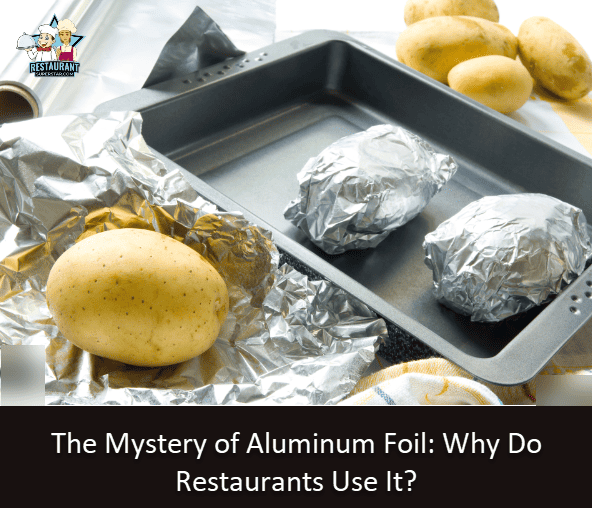
So, if you’ve been to many restaurants or bistros, you’ve seen that shiny silver wrap around your baked potato.
Yeah, the aluminum foil mystery! Have you ever wondered, “Why is this spud dressed like a shiny burrito?” Well, let’s peel back the layers and find out.
The Silver Linings of Aluminum Foil
Heat Retention
- It’s like giving your potato a cozy, insulated jacket. The foil acts as a barrier, reflecting the potato’s natural heat onto itself. This little trick ensures that by the time Mr. Potato lands on your plate, it’s still piping hot from its oven adventure.
Moisture Lock
- Moisture is the essence of a fluffy potato. Aluminum foil ensures that the steam generated from the baking process remains trapped. The result? A potato with a dreamy, melt-in-your-mouth interior.
Avoiding the Dreaded Browning
- When exposed to air for extended periods, potatoes can undergo oxidation. This causes them to brown. The foil helps prevent this, ensuring your spud remains aesthetically pleasing and delicious.
Busting Myths: Addressing Foil Concerns
Is Aluminum Leaching into My Potato?
- This is a common concern, I hear. While acidic foods can sometimes react with aluminum, baked potatoes aren’t acidic enough to leach significant amounts of aluminum. So, rest easy knowing that shiny wrap isn’t compromising your potato’s integrity.
“But Jeff, I Heard Foil-Wrapped Potatoes Can Be Dangerous!”
- Let’s talk about the botulism concern, shall we? Here’s the deal – when you wrap potatoes in foil and leave them at room temperature for a while, the botulism concerns start. No worries. You’re good to go if you store them properly and leave them out quickly.
So, the next time you encounter a foil-wrapped potato at your favorite diner or upscale restaurant, you’ll know the magic behind the metallic curtain.
It’s all about maintaining that potato perfection – from texture and warmth to the flavor that makes us return for more.
Stay curious, fellow foodies, and until next time, keep those spuds shining.
Enhancing the Potato Experience: The Role of Salt and Soaking
So, here’s the thing – after consulting with numerous restaurants over the years, I’ve discovered that there’s always that magical “oomph” that sets apart a good baked potato from one that you won’t soon forget.
You feel me. Let’s dive into these mouthwatering mysteries.
Salting the Skin
- Flavor Amplifier: Have you ever tasted a potato that tasted flat? A dash of salt on that skin can elevate the entire spud experience. It enhances the potato’s natural flavors, making every bite pop.
- Textural Magic: Salt doesn’t just season; it draws out moisture. This results in a crispy, irresistible skin that contrasts beautifully with the fluffy inside.
Diving into the Soak
Let me spill the beans (or, in this case, the potatoes) on why so many restaurants take the time to soak their spuds.
Starch Begone
- Soaking is vital if you’re looking for that crisp exterior and soft interior. It rinses the excess starch that might otherwise lead to a gummy, unpleasant texture.
Anti-Browning Brigade
- Remember that potato salad that turned a funky shade? Soaking removes oxidation, especially with lemon juice or vinegar, ensuring your potatoes retain their natural, delicious hue.
Flavor Central
- This one’s for the restaurants that like to get a bit fancy. Marinating potatoes can infuse them with various flavors, from garlic and rosemary to zesty citrus notes. It’s a game-changer, trust me.
Quick-Step Cooking
- If time is of the essence, a pre-soak can cut down the cooking process. Especially in a busy restaurant kitchen, every minute counts. Soaking ensures that your potatoes cook evenly, preventing those dreaded crunchy centers.
If you ever wondered why the potatoes at your favorite joint taste so darn good, chances are there’s a soaking step you might’ve missed in your home cooking. It’s a simple technique, but it makes a world of difference.
Till we meet again, keep those spuds soaked, salted, and sensational!
Why Restaurant Baked Potatoes Taste Heavenly

Why do those restaurant-baked potatoes taste like a slice of heaven? If you’ve ever tried to replicate that restaurant-quality baked potato at home and wondered why it isn’t the same, I’ve got some insights.
- Selection Matters: The Right Spud for the JobQuality First: Restaurants often source high-quality, specific varieties of potatoes known for their baking properties. Think Russet Burbanks with their starchy content and thick skins. The starting ingredient can make or break the dish.
Perfect Prepping
- Consistent Sizing: In the restaurant world, consistency is everything. By choosing potatoes of similar sizes, they ensure even cooking. No surprises here!
- The Art of Piercing: Those little holes aren’t just for show. They allow steam to escape, preventing the dreaded potato explosion and ensuring a fluffier interior.
Cooking Techniques
- High-Heat Magic: Many restaurants bake their potatoes at higher temperatures than we’d typically use at home. This crisps the skin and cooks the interior perfectly.
- Rotating Regiment: Have you ever noticed that perfect evenness? Many chefs rotate the potatoes during baking to ensure uniform cooking. It’s all in the details!
Fluffy on the Inside
- The Potato Ruffle: Post-baking, chefs might give the potato a gentle ‘ruffle’ using a cloth, releasing the steam and creating that dreamy, fluffy texture we all love.
Gourmet Toppings
- High-Quality Butter and Cream: While we might reach for any butter in the fridge, many restaurants opt for premium varieties or make their own.
- Signature Touches: Truffle oil, chives, gourmet cheeses… restaurants know how to dress a potato to impress.
So, the next time you’re relishing that restaurant-quality baked potato and pondering its perfection, remember it’s a blend of careful selection, meticulous preparation, and those little touches of finesse.
A lot goes behind the scenes to make that humble potato a star dish! Keep munching, and always appreciate the craftsmanship behind every bite.
Conclusion and Personal Thoughts
We’ve journeyed quite a bit through the baked potato realm, haven’t we? From the science of reheating to the artistry of toppings, it’s clear that a lot more goes into creating that perfect spud than meets the eye.
But here’s my take on it:
Quality Above All: No matter the reheating method, starting with a high-quality potato is half the battle won. It’s like using fresh fish for sushi; the base ingredient has to be top-notch.
Experiment and Innovate: There isn’t a one-size-fits-all answer. While the oven method might be the gold standard for many restaurants, be bold and explore with air fryers or grills. Sometimes, you might stumble upon a texture or flavor that’s uniquely yours.
Toppings, Toppings, Toppings: A baked potato is like a blank canvas. It’s the toppings and the accompanying flavors that turn it into a masterpiece. Please don’t hold back, whether it’s a dollop of creme fraiche or a sprinkle of sun-dried tomatoes.
Lastly, I’d like to invite all you budding restaurateurs and home cooks to dive deep into the world of potatoes. Find your groove, experiment with flavors, and remember that sometimes, the simplest dishes require the most attention to detail.
Do you possess any delectable secrets for baking potatoes?
Or a reheating technique that works like magic?
I would be thrilled to hear your tips. Feel free to drop your comments below, and let’s continue our fantastic conversation about all things spud.
Until next time, keep those ovens warm and your taste buds curious!
Cheers, Jeff from Florida
Jeff Smith is a Restaurant Consultant with over 20 years of hospitality experience ranging from server to owner and general manager. He focuses on Restaurant POS technology as well as restaurant marketing. Check out our world-famous restaurant resources page for a comprehensive offering of hand-picked resources and tools to help your business. You can also check out some of our other restaurant business articles.

